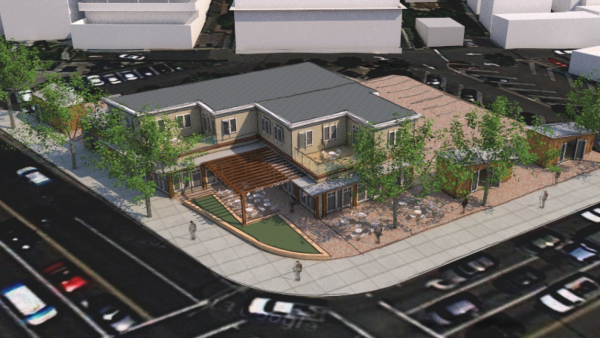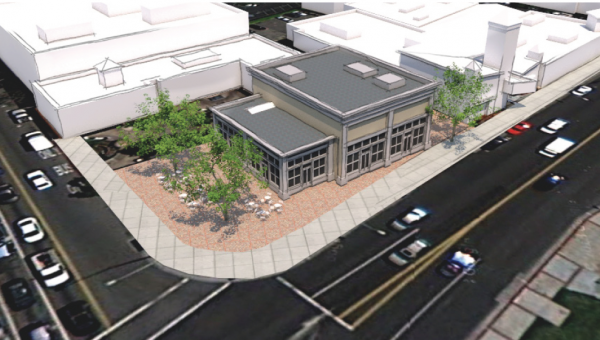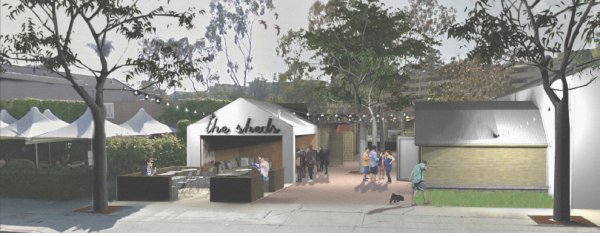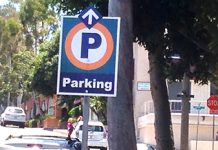
Daniel Langhorne, Special to the Independent
The Laguna Beach Planning Commission is expected to get its first look Wednesday at a draft of the Downtown Specific Plan, a hugely consequential document that will guide redevelopment in the historic core for decades, which has been in the works for about seven years.
The coming discussion on the 169-page document will be the first major test of the junior planning commissioners: artist Jorg Dubin and hotel executive Steve Goldman.
“This document was formulated as a result of a multi-year process that included a large number of public outreach workshops, stakeholder meetings, and interviews, and both City Council and Planning Commission meetings,” Greg Pfost, director of community development, wrote in a statement. “It is intended to provide a clear understanding of the vision that the community has set for the future of Downtown Laguna Beach.”
Development of affordable housing, particularly for low-income seniors and students, is identified as a priority in the Downtown Specific Plan. According to the 2010 U.S. Census, there are 439 residential units identified in the Specific Plan, of these only 103 units are part of mixed-use developments.
“Given the high land costs downtown, most housing development is not financially feasible without providing for more flexibility in development standards, including parking and density,” the plan states. “One additional standard that could be considered is allowable height.”
The Specific Plan maintains the one-story height limit on Beach Street, the lower half of Forest Avenue, and the Bluffs. These rest of the downtown would be potentially opened to new two-story development, and Laguna Canyon would see up to three-story development from the Village Entrance to the Laguna Beach Boys & Girls Club.
City leaders will also consider encouraging mixed-use developments and the conversion of second-story, commercial uses to residential units. The proposed Specific Plan would also allow the assembly of parcels into building sites over 5,000 square feet on Broadway Street, in the Arts District, and in the downtown office district zone to encourage development of affordable and special needs housing.
Village Laguna president Johanna Felder wrote in a statement that the existing Specific Plan allows for new second stories when they will be used for special needs housing.
“The 12-foot limit has survived a long series of revisions of the plan over the years because, on reflection, each new generation has judged it impossible to maintain the current attractive mix of building heights in any other way,” Felder wrote.
She added that the Specific Plan makes “unwarranted assumptions” about the demand for and the desirability of additional market-rate housing in Downtown Laguna Beach.
The Specific Plan also outlines guidelines for any future redevelopment of the Mobil and 76 gas stations at Coast Highway and Broadway. Both corners would be limited to two-story development and be setback from Broadway to create pedestrian-friendly plazas.


There is also a concept to build a public park on top of an underground parking structure at the current site of Los Brisas’ parking lot.
Despite these growth opportunities, the Specific Plan also outlines policies that fiercely guard the village character that makes downtown Laguna Beach a likable, walkable environment. It champions the adaptive reuse of historic residences for commercial enterprises that respect these structures’ integrity. Essentially, the Specific Plan guards against new developments that squash the small-town feeling that residents and visitors enjoy.
The Specific Plan’s progress is welcomed by Laguna Beach merchants including Buy Hand owner Kavita Reddy, who has been outspoken about enlisting the City Council’s help to loosen onerous restrictions that inhibit entrepreneurs and economic development.
“When [the Specific Plan] was originally written in the 80s, the environment was completely different than it is today,” Reddy said. “It’s tough to make it as a retailer, so I think any update is welcome because I think it will add some flexibility.”
For example, retailers who operate on a conditional use permit must seek additional approvals from the City before changing their inventory. This can be very stifling in an already stressed retail industry.
“You have to be able to adapt as a business, so I’d like to see some of those rules relaxed,” Reddy said. “I’m excited we’re modernizing.”
To encourage outdoor living, the Specific Plan recommends the city develop a parklet program that sets standards for their design and maintenance. Parklets would likely convert one or more on-street parking spaces in pedestrian-heavy areas into seating areas with benches, planters, and tables. The goal is to allow community members to lounge after visiting nearby retail and restaurants.
Barbara MacGillivray, co-founder of the Laguna Beach Urban Tree Fund, said anything that brings more nature and greenery into the city’s public space is a good thing. While the Specific Plan supports planting additional trees and shrubs, she said lots of details still need to be ironed out in another document called the Downtown Action Plan.
“What we want is a bountiful and shade-providing tree canopy downtown, as much as possible, because that’s what’s going to provide all of those benefits,” MacGillivray said.
The Planning Commission is set to meet and review the plan at 6 p.m. on Aug. 21 in the City Council Chambers.




